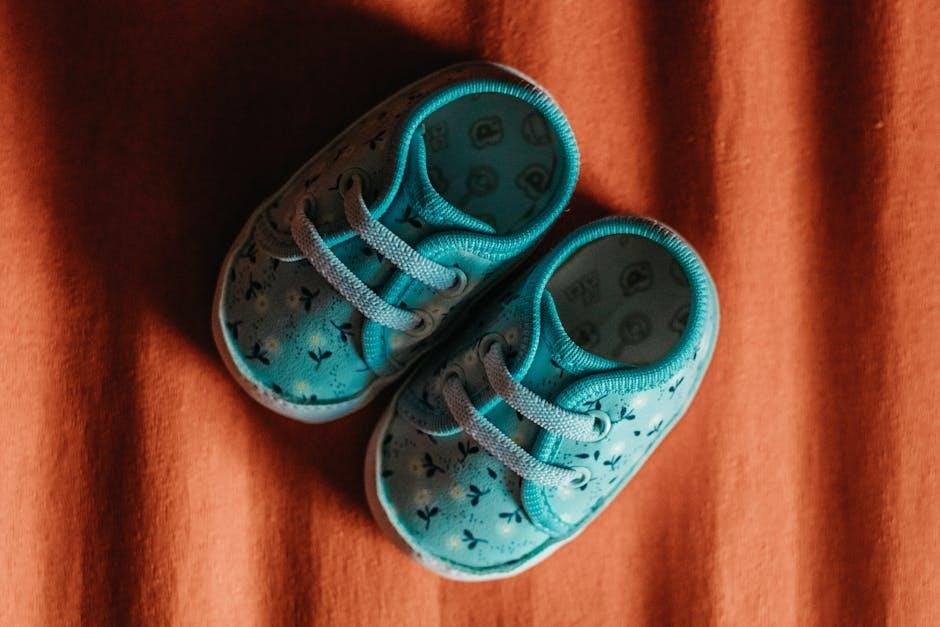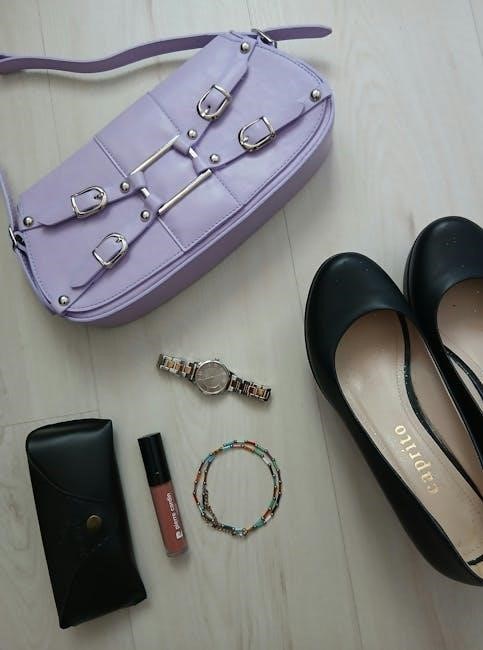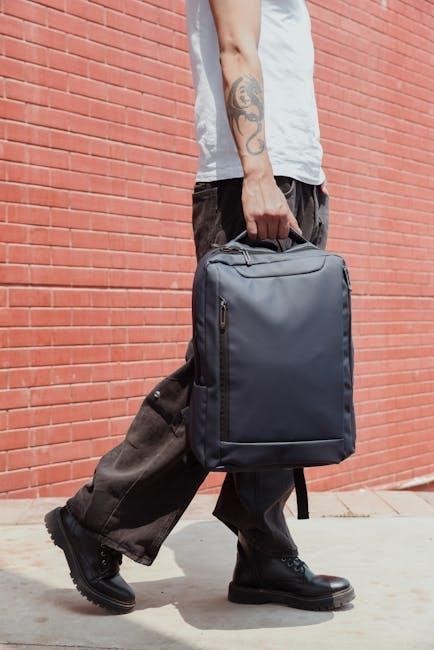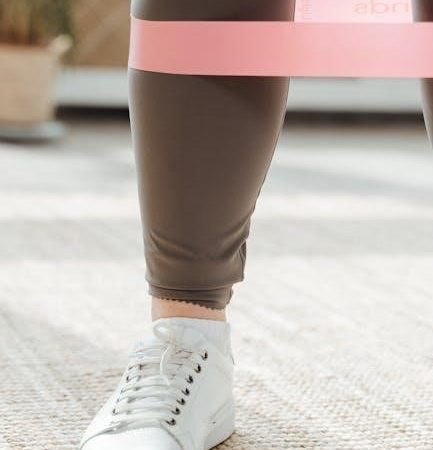Choosing the right crib shoe size is crucial for your baby’s comfort and foot development. This guide helps you navigate sizing, measurements, and conversions to ensure the perfect fit for growing feet.
Understanding Crib Shoe Sizing
Crib shoe sizing is designed to ensure comfort and proper foot development for babies. Sizes are typically based on foot length and width, with slight variations between brands. A good fit allows about 1 cm (0.4 inches) of space from the heel to the toe for growth. Size charts often include EU, UK, and US standards, but conversions may vary slightly. Factors like shoe type and material can also influence fit. Parents should consider their child’s growth rate when selecting sizes. Proper sizing prevents tightness that could hinder movement or cause discomfort. This guide helps you decode size charts and choose the best fit for your baby’s unique needs.

How to Measure Your Child’s Feet
Measuring your child’s feet accurately is essential for the right fit. For babies, place the foot on paper and trace the outline. For toddlers, use a Brannock device or shoe size chart. Ensure the foot is flat, measure from heel to the longest toe, and allow 1 cm of space for growth. This method ensures comfort and proper development. Always measure both feet, as sizes may differ slightly.
3.1. Methods for Babies
Measuring a baby’s feet requires gentle precision. Place the baby on a flat surface and slide a ruler under their foot, ensuring it’s straight. Gently press the foot down to flatten it slightly. Measure from the back of the heel to the tip of the longest toe. For accuracy, repeat the process on both feet, as they may differ. Use a growth allowance of about 1 cm to ensure room for movement and development. Always measure at the end of the day, as feet tend to swell slightly. This method ensures a comfortable fit for crib shoes. Keep the baby calm during the process to get an accurate reading. If using a tracing method, place the foot on paper and draw around it carefully, then measure the tracing. This ensures the perfect fit.
3.2. Methods for Toddlers
For toddlers, measuring foot length can be more straightforward as they can stand. Use a sturdy ruler or a foot measuring tool like a Brannock device. Place the toddler on a flat surface, ensuring they stand straight. Measure from the back of the heel to the tip of the longest toe. For accuracy, measure both feet, as they may differ slightly. Allow about 1 cm of growth room for comfort and development. If using the tracing method, have the toddler stand on a piece of paper, trace around the foot carefully, and measure the longest points. Repeat the process to ensure consistency. This method helps determine the perfect crib shoe size, ensuring comfort and support for active toddlers. Regular measurements are recommended as toddlers grow quickly, and shoe sizes may need updating frequently.

Importance of Proper Fit
Proper fit is essential for your child’s comfort and foot health. Ill-fitting crib shoes can lead to discomfort, blisters, or even hinder proper foot development. Shoes that are too tight can restrict growth, while overly loose shoes may cause tripping. Ensuring the right fit allows your child’s feet to breathe and move naturally, promoting healthy growth.
When measuring, aim for a finger’s width (about 1 cm) between the shoe and the heel to accommodate growth. This space ensures your child can walk and play comfortably without restriction. Properly fitted shoes also provide the necessary support for developing arches and ankles.
Regularly checking the fit is crucial, as children’s feet grow quickly. Updating sizes as needed ensures continued comfort and support, helping your child explore the world with confidence. Proper fit is not just about size—it’s about fostering healthy, happy feet.

Crib Shoe Size Charts
Crib shoe size charts are essential tools for determining the right fit for your child. These charts typically correlate foot length in centimeters with EU, UK, and US shoe sizes. For example, a foot length of 9.3 cm generally corresponds to a EU size 17, UK size 1.5, and US size 2C.
By referencing a size chart, you can ensure your child’s shoes are neither too tight nor too loose. Most charts also account for growth, recommending about 1 cm (or 0.4 inches) of space between the heel and the shoe’s tip. This allows for comfort and natural movement.
Using a size chart, parents can easily match their child’s foot measurements to the appropriate shoe size, ensuring a perfect fit that supports healthy foot development. Regular checks and updates are recommended as children’s feet grow rapidly.

Shoe Size Conversion
Shoe size conversion charts help parents navigate different sizing standards across regions, ensuring the right fit for growing feet. Foot length is key to accurate conversions.
6.1. EU to UK Conversion
Converting EU to UK shoe sizes is essential for ensuring the right fit for crib shoes. EU sizes are typically 1.5 to 2 sizes larger than UK sizes. For example, an EU size 17 corresponds to a UK size 1.5. Parents should refer to size charts or conversion tools to match their child’s foot length to the correct size. Foot length measurements are crucial, as they determine the appropriate size. Different brands may have slight variations, so checking the specific brand’s conversion guide is recommended. Proper fit ensures comfort and supports healthy foot growth. Always consider the conversion differences to avoid sizing errors. Using reliable conversion charts or brand-specific guides helps achieve the best fit for growing feet.
6.2. EU to US Conversion
Converting EU to US shoe sizes is essential for parents shopping across international brands. EU sizes are generally 1.5 to 2 sizes larger than US sizes. For example, an EU size 17 corresponds to a US size 2C. To ensure accuracy, use a reliable size chart or conversion tool. Foot length measurements are key, as they directly translate to the correct size. Parents should note that slight variations may exist between brands, so checking brand-specific conversion guides is advisable. Proper fit is crucial for comfort and healthy foot growth. By understanding the EU to US conversion, parents can confidently select the right crib shoes for their child. Always refer to official size charts or conversion tools to avoid sizing errors and ensure the best fit for growing feet.
6.3. Other Size Conversions
Beyond EU to UK and US conversions, understanding other size systems is essential for global shopping. For instance, Asian sizes often align closely with US sizes but may vary slightly. Australian sizes are similar to UK sizes but require careful cross-referencing. Parents should also be aware of differences in sizing standards across regions, such as Japan or Canada. To ensure accuracy, use a reliable shoe size conversion chart or tool that accommodates multiple regions. Foot length measurements remain a universal guide, but conversions may vary slightly between brands. Always check brand-specific size guides for precise fitting. Additionally, some retailers offer online size converters or foot measurement calculators to simplify the process. Accurate conversions are key to avoiding overly tight or loose shoes, ensuring comfort and proper foot development for your child.

Factors Influencing Shoe Size
Foot growth rates and shoe types significantly impact sizing. Growth spurts and activity levels require frequent size checks. Proper fit ensures comfort and healthy foot development.
7.1. Growth Rates in Children
Children’s feet grow rapidly during infancy and toddlerhood, requiring frequent size checks. On average, babies’ feet grow about 1 cm every 2-3 months. This rapid development means shoe sizes may change multiple times within the first few years. Proper fit is essential to prevent discomfort and potential foot issues. Parents should measure their child’s feet regularly, especially during growth spurts. Factors like genetics and overall health can influence growth rates, but most children follow a predictable pattern. Monitoring foot length and width ensures that crib shoes provide adequate room for toes to wiggle, promoting healthy development. Regular checks and updates to shoe size are crucial for comfort and support as little ones learn to walk and explore.
7.2. Different Shoe Types
The type of shoe significantly impacts sizing and fit for crib shoes. Soft-soled shoes, ideal for babies, often have more flexibility but may require slightly smaller sizes to stay snug. Supportive walking shoes for toddlers, on the other hand, need to accommodate growing feet while providing stability. Sandals and boots have unique sizing needs due to their designs. Parents should consider the shoe’s purpose and material when selecting sizes. For example, thicker socks in winter may necessitate a slightly larger size; Measuring foot length and width ensures the best fit, regardless of the shoe type. Growth spurts can affect sizing, so regular checks are essential. Understanding how different shoe styles fit helps parents make informed choices for their child’s comfort and development. Always refer to size charts specific to the shoe type for accurate sizing.

Special Considerations
When determining crib shoe sizes, there are several special factors to consider. Each child’s foot shape and growth rate can vary significantly, so sizing may differ between siblings or even the same child over time. Medical conditions, such as flat feet or toe alignment issues, may require specific shoe types or custom fittings. Additionally, seasonal changes can influence sizing, as thicker socks in winter may necessitate a slightly larger size. Parents should also consider the material and breathability of the shoes, as this can affect comfort and fit. Regular monitoring of foot growth and adjustments to shoe size are essential to prevent discomfort or developmental issues. Understanding these special considerations ensures that parents can provide the best possible fit for their child’s unique needs. Always consult size charts and seek professional advice if unsure.

Tips for Parents
When shopping for crib shoes, parents should prioritize comfort, support, and proper fit. Always use a size chart specific to the brand, as sizes can vary. Measure your child’s feet regularly, as growth spurts can happen quickly. Ensure there is about 1 cm of space between the heel and the shoe’s end for optimal comfort. Consider the thickness of socks, as this can affect fit. Opt for breathable materials to keep feet cool and dry. Avoid tight or constricting shoes, as they can hinder foot development. If your child has unique needs, such as wider feet or medical conditions, consult a professional for guidance. Seasonal changes may require adjusting sizes due to thicker or thinner clothing. By following these tips, parents can ensure their child’s shoes provide comfort and support during crucial growth stages. Regular checks and adjustments are key to maintaining the perfect fit.

Common Mistakes to Avoid
When selecting crib shoes, parents often make mistakes that can affect comfort and proper fit. One common error is guessing sizes without measuring, which can lead to ill-fitting shoes. Another mistake is not accounting for growth spurts, as children’s feet grow rapidly. Some parents rely too heavily on brand size charts, unaware that sizes can vary between brands. Forgetting to check the fit regularly is another oversight, as shoes that were once comfortable may become too tight. Ignoring the importance of proper fit can result in discomfort or even foot development issues. Additionally, some parents size shoes based on age rather than actual foot length, which can be inaccurate. By avoiding these mistakes, parents can ensure their child’s shoes provide the necessary support and comfort during early growth stages. Being mindful of these common pitfalls helps in making informed decisions.
Finding the perfect crib shoe size for your child is a process that requires attention to detail and understanding of proper fit. By following the guidelines outlined in this guide, parents can ensure their child’s feet are comfortable and supported during early growth stages. Accurate measurements, understanding size charts, and considering factors like growth rates are essential for making informed decisions. Avoiding common mistakes, such as guessing sizes or ignoring regular fit checks, can prevent discomfort and potential foot development issues. With the right tools and knowledge, parents can navigate the world of crib shoe sizing with confidence. Remember, proper fit is key to promoting healthy foot growth and ensuring your child’s shoes are both functional and comfortable. By staying informed and proactive, you can provide your child with the best footwear solutions for their unique needs.
